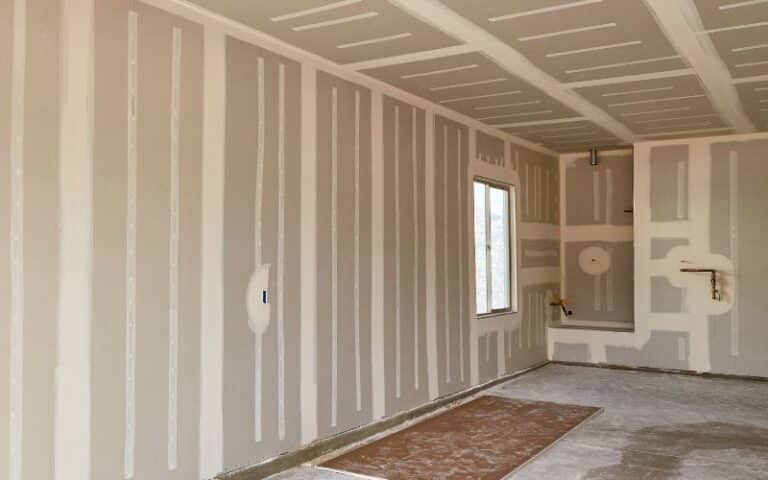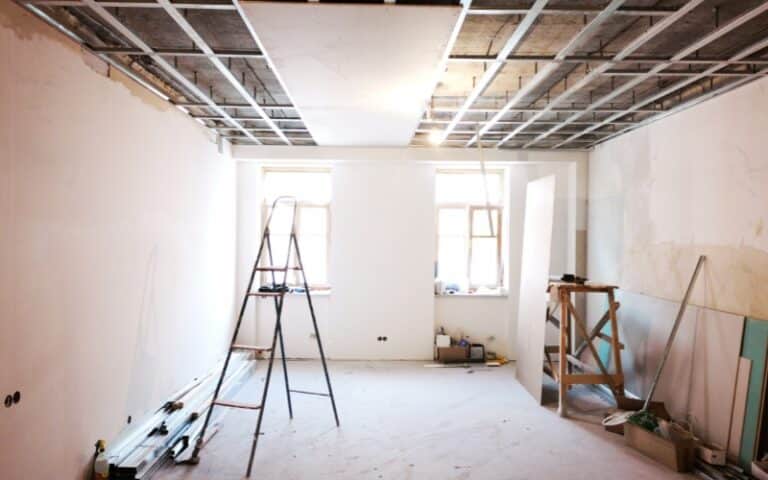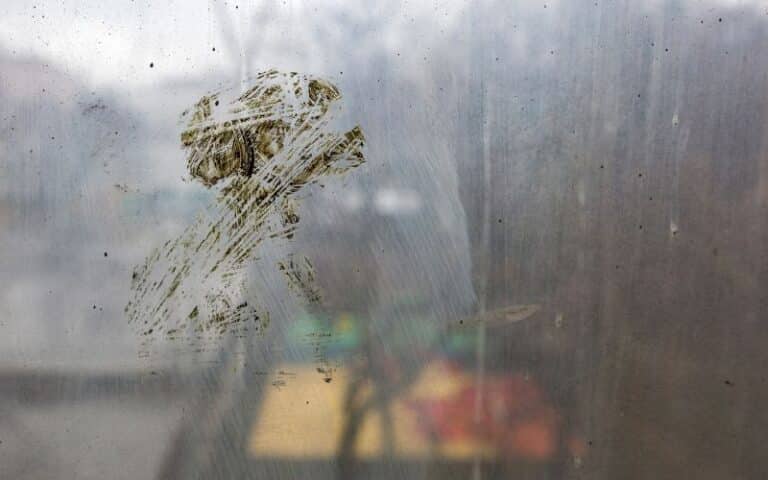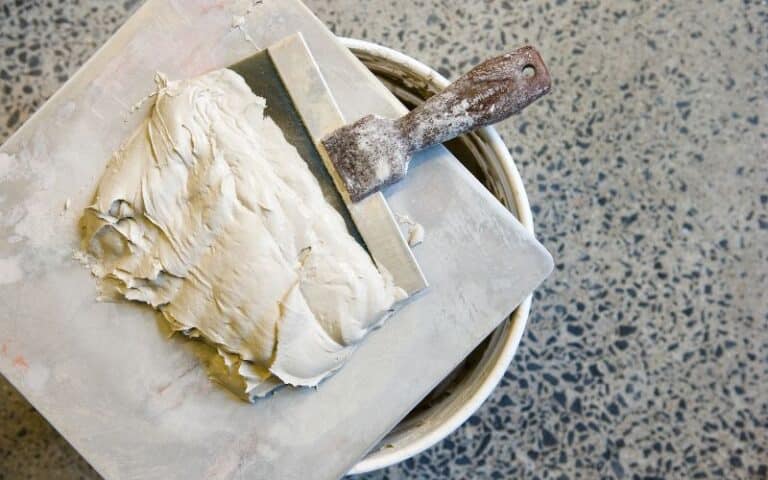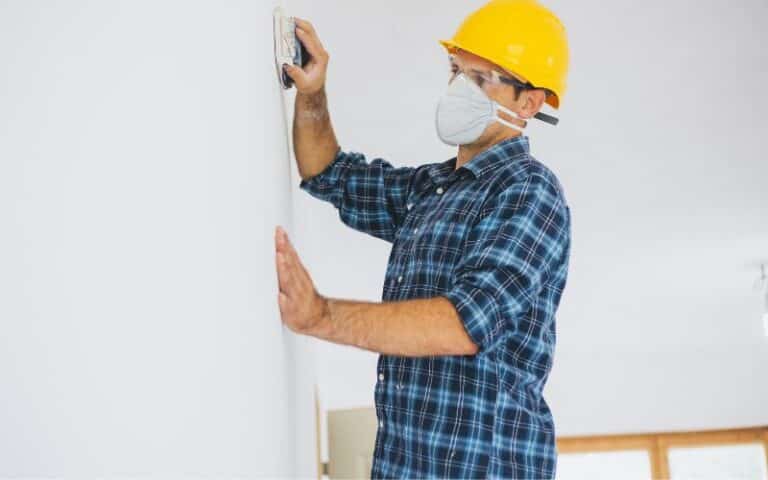In every construction work, the sequence and order of activity are vital. Every professional knows this fact.
If you intend to carry out this construction work yourself, you should know the proper order for placing the doors or the drywall.
Having a proper order not only makes the work more accessible but also ensures that your finishing is perfect and the interior work is done well.
This principle is also true in construction and renovations involving drywall installation.
You should install your doors after you have completed the drywall. Although you can hang your doors first, having your drywall before installing them is best. Your door is installed when your drywall is suspended, taped, and finished. This sequence leaves your work perfectly clean at the end.
In this article, I will explain why you must follow the sequence of having your drywall before you hang your door.
In addition, I will list and explain the activities that come before drywall installation.
Ready for a Drywall Quiz?
Should You Hang Doors Before or After Drywall Installation?
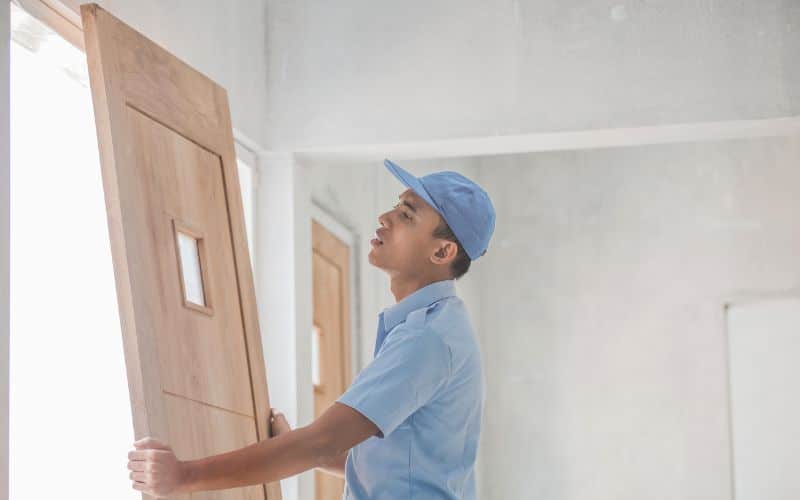
It would be best if you hung your doors after you have installed the drywall. This sequence is the common pathway to adopt when fixing your interior furnishing.
You can also choose to do otherwise by hanging the doors before you apply your drywall. Whichever pattern you prefer, you should understand the peculiarity of each of them.
When you apply the drywall to a building before installing the doors, you will discover how easy it can be.
Installing drywall can be tedious and may leave behind some stains. When you apply the drywall before the doors, all the colors will remain on the wall.
In the instance where you apply the doors before the drywall, the stains will be deposited on the door. You may need to clean up the doors after the process.
A drywall is a sizeable rigid sheet of material that you can apply to cover the interior walls of your home or office.
You can also use drywall for demarcation and parting in an ample open space. When you apply drywall to a wall, you must apply other finishings to complete the job.
These finishing materials include paints, primers, and finishing coats. These materials sometimes help cover up edges between two boards and the wall.
When you apply these finishing materials, they may likely spill on the doors. This spillage can result from the proximity between the drywall and the doors.
When paints and drywall primer falls on your door, they alter the colors of the door. These colors may be difficult to clean off.
Applying drywall to walls can be messy. To avoid all the stains associated with it, you should hang the doors after you have installed your drywall.
When you have to hand a finished door, it will be best to have your drywall before you hang it.
Finished doors can easily get stained with paints, primers, or dust from the drywall. These stains are difficult to remove, and they may change the entire outlook of the job.
Aside from the stains, you can have other things affect the doors. There could be dents, scratches, and dings. These alterations could result from the tools you use when applying the drywall.
When Is It Best to Hang Interior Doors?
The best time to hang an interior door depends on the type of door you intend to install. Applying the drywall before turning the doors for most entries is best.
When applying the finishing touches to your interiors, there could be a need to use paintings, screeding, primers, and drywall.
These processes could be cumbersome and messy. Applying these finishings before you hang your doors can save you much work cleaning up afterward.
When you intend to hang finished doors, applying other construction processes to your interior design will be best before you turn the doors.
Finished doors require delicate care and handling. Focus on hanging the finished door when working on your interior designs.
When applying the finishings on your interior designs, particles from these finishings may drop on your finished door. These particles could alter the look of your finished door.
In the case of unfinished doors, you could choose to have the doors hanging before applying other finishes.
Although applying other finishes could be messy, you can always work on an unfinished door. When the particles of the finishing fall on the door, it makes no difference.
Finished doors are doors that you buy already sanded, primed, and painted. You don’t need to apply any form of modification on these doors. All you need to do after purchase is to fit them.
On the other hand, unfinished doors require some modification after purchase. These modifications would include sanding, painting, and priming.
In this case, you can hang your doors before proceeding with the other finishing works. It may make no significant difference since you must work on the doors afterward.
In any case, if you have particles from finishing the interior designs falling on the doors, it will not cause any damage to the doors.
Should You Install Pocket Doors Before or After Drywall?
You can install a pocket door at any time during your construction process. This sequence depends on the type of remodeling and finishing you intend to apply.
You can install the pocket doors before applying the drywall and other interior designs and jobs for minor remodeling.
In the case of significant remodeling, you can install the pocket door after completing every other interior finishing work.
In this case, you should install the pocket door along with the remodeling. Following this sequence, the pocket door will be installed during the framing stage.
When you apply the doors at the stage, you seize the doorway as an opening to advance with the proper width and height.
On the other hand, when you carry out minor remodeling, you should install the pocket door before applying the drywall. This sequence will allow you to merge the finishings.
In this case, the pockets door drywall, the wall, and the pocket door all fall in place when you begin to apply paint or primer.
Pocket doors do not swing open. This door slides into space whenever you want access to the room or area.
The pocket doors save space because it does not swing on a hinge. This mode of access is a tremendous advantage in interior decoration.
Aside from saving space, pocket doors also reduce the cumbersomeness of swinging doors during drywall installation.
Pocket doors do not get in the way when you apply drywall, paints, or other finishings. They can be comfortably hidden so the particles do not mimic their appearance.
When applying these finishing touches, you can slide the pocket door away from the point where you work to avoid any form of alterations.
What Comes Before Drywall in Construction?
In a construction sequence, framings and electrical installations come before applying drywall. An ideal arrangement to follow depends on the type of door you intend to hang.
Generally speaking, here is an ideal sequence to follow when installing drywall;
- Framing
- Electrical and plumbing installations
- Drywall
- Painting
- Installation of doors
#1. Framing
In interior works, framing is the first step to apply. The doors hang on the frames, and the boundaries determine the edges of the drywall.
When framing your doors, ensure that you have the appropriate measurements so that the doors will fit perfectly into the frames.
#2. Electrical and Plumbing Installations
Electrical and plumbing fittings can go next. You can run these fittings on the wall behind the drywall. You could also pass them on to the drywall.
Whichever pattern you prefer, these fittings come next.
#3. Drywall
After the electrical fitting, you can apply the drywall. Drywall comes with a lot of work. You may need to cut, paint and prime the surface of the drywall.
This part of the work can be very messy. Please apply the doors after this step to avoid alterations to the door.
#4. Painting
You can apply paints after you have installed the drywall. At this point, you can also use the primers on the drywall.
#5. Installation of Doors
Depending on the type of doors you want to install, this could be the last step in having a perfect internal decoration.
Below is a table summarizing the steps you should take when installing doors in your space:
| Steps With Finished Doors | Steps With Unfinished Doors |
|---|---|
| Framing | Framing |
| Electrical and plumbing installations | Electrical and plumbing installation |
| Drywall | Drywall |
| Painting | Hanging doors |
| Installation of doors | Painting |
It is essential to follow an ideal sequence. A perfect arrangement ensures that every installation is in place and the work is less messy.
In construction, the correct sequence will deliver a clean job. When you go back and forth during construction, you will most likely need to find a fitting.
Aside from having neat work done, you also increase your safety and your house’s. When you follow the ideal sequence, you are likely to have a firm and secured construction.

